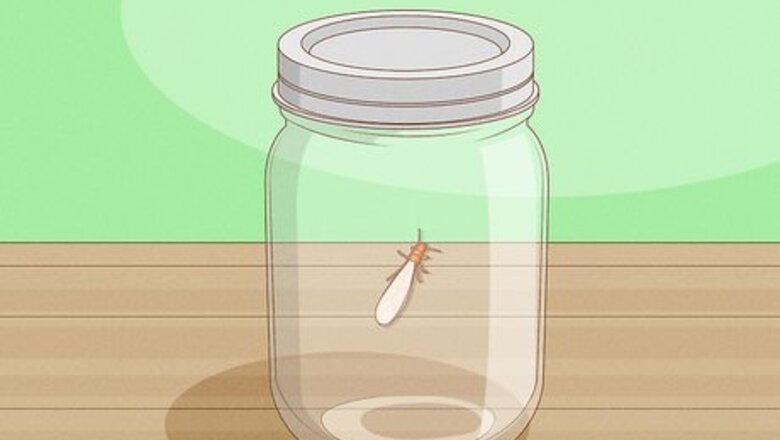
views
- There are 3 different types of termites.
- Winged termites are dark brown or black and have 4 wings that are all the same size.
- Worker termites are white or translucent. They have straight antennae.
- Soldier termites are brown and have pincers near their heads.
Examining Physical Characteristics
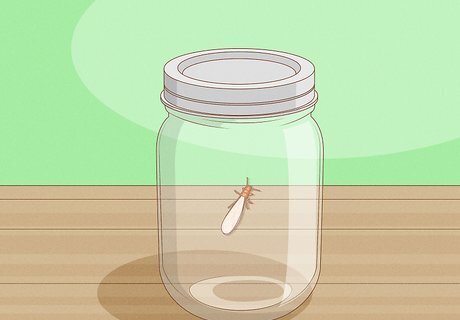
Catch an insect if possible. Termites look similar to ants and need to be inspected closely to differentiate. If possible, trap one of the bugs in question for examination and look at it under a magnifying glass or something similar. You can pick up a termite by gently clasping it between your thumb and forefinger. Place the termite in something like a mason jar to examine it. You can still examine a dead termite, but it may be easier to observe a live one. Pick up the bug carefully to avoid killing it.

Look at the wings and antennae. Termites have distinctly different wings and antennae than ants. One way to tell you're dealing with a termite and not an ant is to carefully examine the bug's wings and antennae. Termites have 4 wings. All 4 wings are the same size as a termite's body, while ants' wings are different sizes. Note that termites lose their wings after swarming, so the termite you’re looking at may not have any. Termites have 2 straight antennae. Ants' antennae are somewhat curved.

Be aware of the different types of termites. Termites have 3 different types: winged termites, worker termites, and soldier termites. If you see different types of bugs around your house, you may be looking at different types of termites. Winged termites are dark brown or black. These are the termites you are likely to see and inspect. Worker termites do not have wings, but still have the same antennae. They are white in appearance and sometimes translucent. Soldier termites do not have wings and are brownish in colors. They have pincers near their heads, as well as antennae.

Note the size of the insect. You do not necessarily need to measure a termite and doing so may be difficult. However, try to note the rough size. Termites are about ⁄8 inch (0.95 cm) long.
Observing Signs of an Infestation
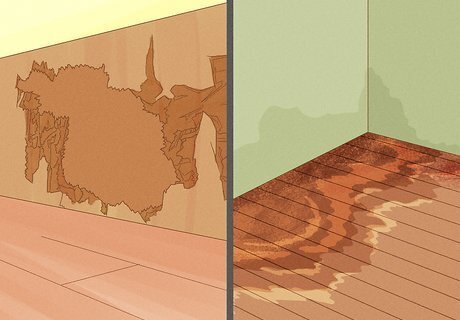
Look at changes in your home. Termites can cause damage to your home. In the event of an infestation, you may notice signs of damage. Your wood may sound hollow when you tap or knock against it. You may also notice your floors and ceilings are sagging. Crumbling wood and chipped paint can also indicate and infestation.

Listen for termite noises. You can often hear an infestation before you see it. Soldier termites sometimes tap their heads inside your walls. If you hear tapping noises in your home, this may be indicate a termite infestation.

Watch out for droppings. Termite droppings are another sign your home is infested. Droppings look like tiny pellets and may show up near walls or other places termites congregate. If you notice pellets piling up in your home, this is a sign of an infestation. Note that subterranean termites use their droppings as construction material for tunnels, so you may not notice termite droppings in your home.
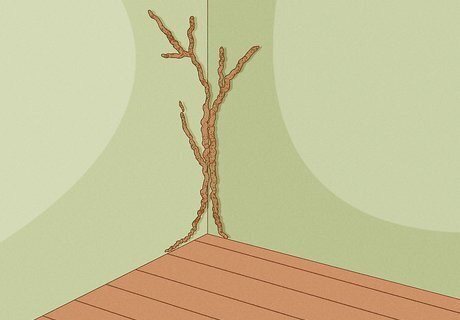
Look for mud tubes on walls. Termites often build tubes of mud and dirt against walls. These are to protect termites from predators and sunlight. Unusual tubes of mud running against walls in your home, often found outdoors, are a sign of termites. The structures look clay-like and dark brown. Termites often build mud tubes overnight, so you may notice them cropping up unexpectedly in the morning.
Dealing with an Infestation

Select a pest control company carefully. A termite infestation can cause major damage to your home. It should be treated promptly by a professional. Select a reputable pest control company right away if you suspect you have termites. Make sure any company you choose is licensed with the Department of Agriculture. A company that's a member of the National Pest Management Association is also a plus. Contact 2 or 3 companies to get estimates. It can be costly to deal with termites, so make sure you seek out the best deal. Termites can cause damage, but do so slowly. It's okay to take some time selecting a quality company. If a company uses scare tactics to pressure you into signing a contract quickly, this is probably not a good company. EXPERT TIP Hussam Bin Break Hussam Bin Break Pest Control Professional Hussam Bin Break is a Certified Commercial Pesticide Applicator and Operations Manager. He and his brother Hussam co-founded Diagno Pest Control in the greater Philadelphia area in 2018, and have since expanded their services to include the New Jersey market. Diagno Pest Control has received Home Advisor's Top Rated and Elite Service Badges for quality of work and customer service. Hussam Bin Break Hussam Bin Break Pest Control Professional Did You Know? A pest control company can help you install a termite monitoring system. These systems are made from a piece of wood with a plastic cap and cardboard. Check it every 6 months for signs of termite damage to tell you whether they're in the ground around your home.

Talk over treatment options with a professional. Termites are usually treated with sprays and pesticides. While EPA-approved pesticides should be safe for your health, if you're not comfortable with chemicals you can try sprays instead. Talk over your options with a pest control representative carefully to decide on the right treatment option for you. In addition to deciding between baits and sprays, talk about how much of your home to treat. Sometimes, a termite infestation can be cleared up with spot treatments or treating the perimeter of your home. Other times, your entire house will need to be treated.

Follow instructions regarding treatment. When using chemicals, your pest control company will give you specific instructions. You may have to stay out of your home for a certain period of time or remove your pets. You may want to consult a physician if you have a medical condition that may be worsened by exposure to chemicals.

Do not attempt to treat an infestation on your own. Treating a termite infestation is complicated and requires a specific set of skills. Under no circumstances should you attempt to treat an infestation yourself. Always talk to a professional exterminator to go over treatment options.














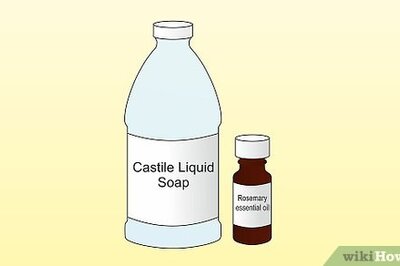




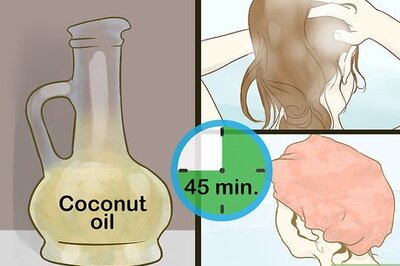
Comments
0 comment